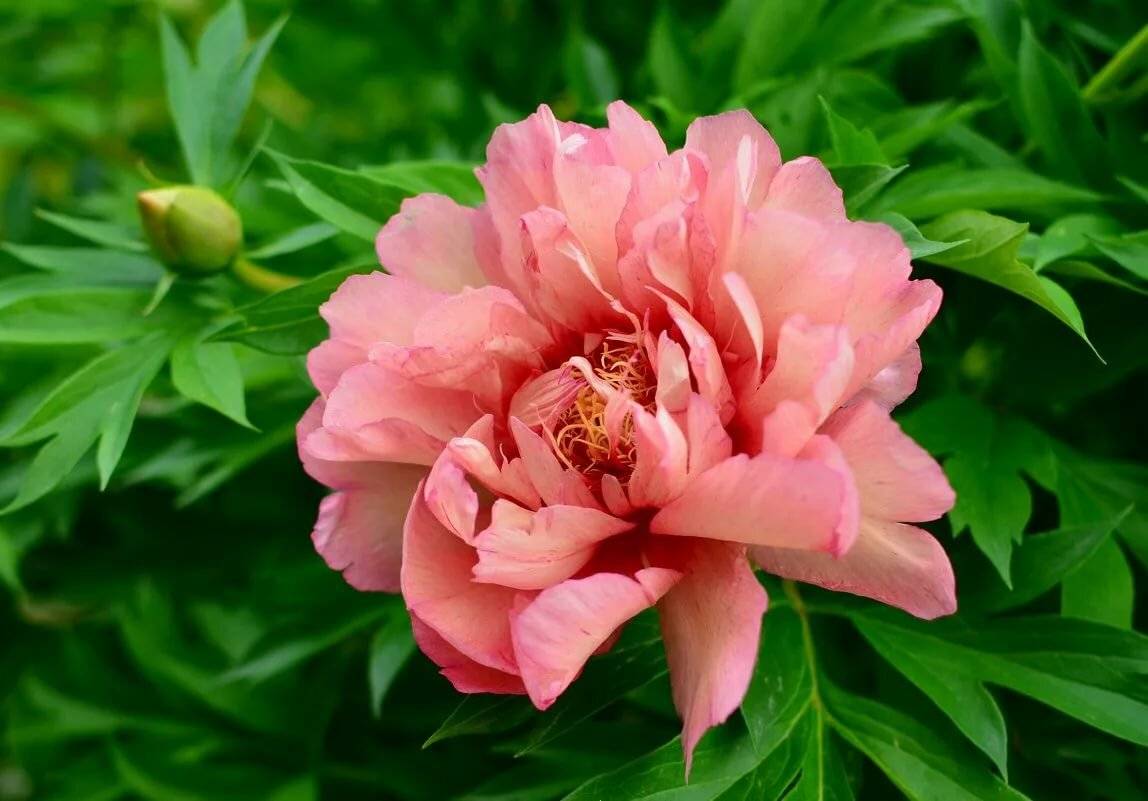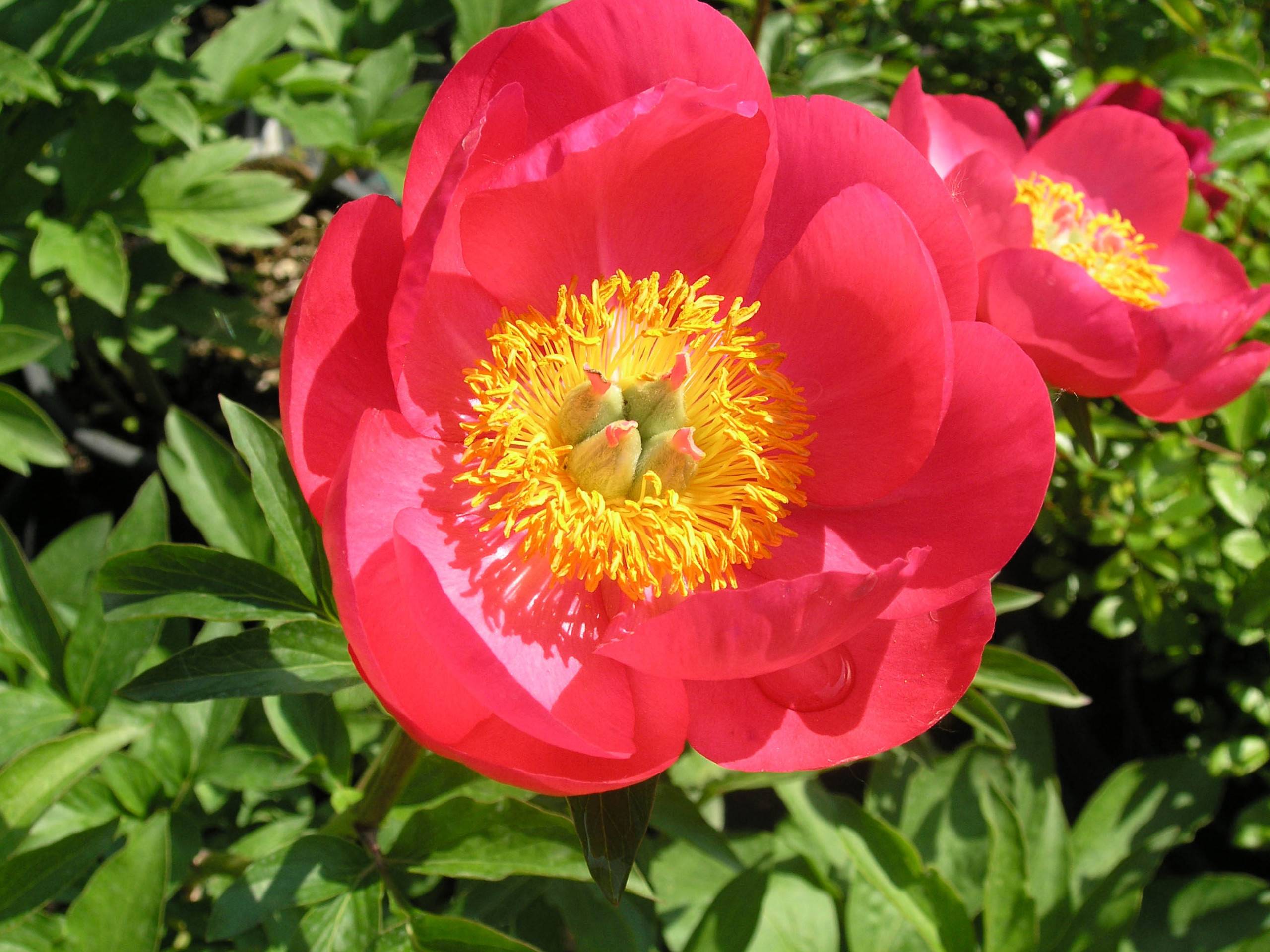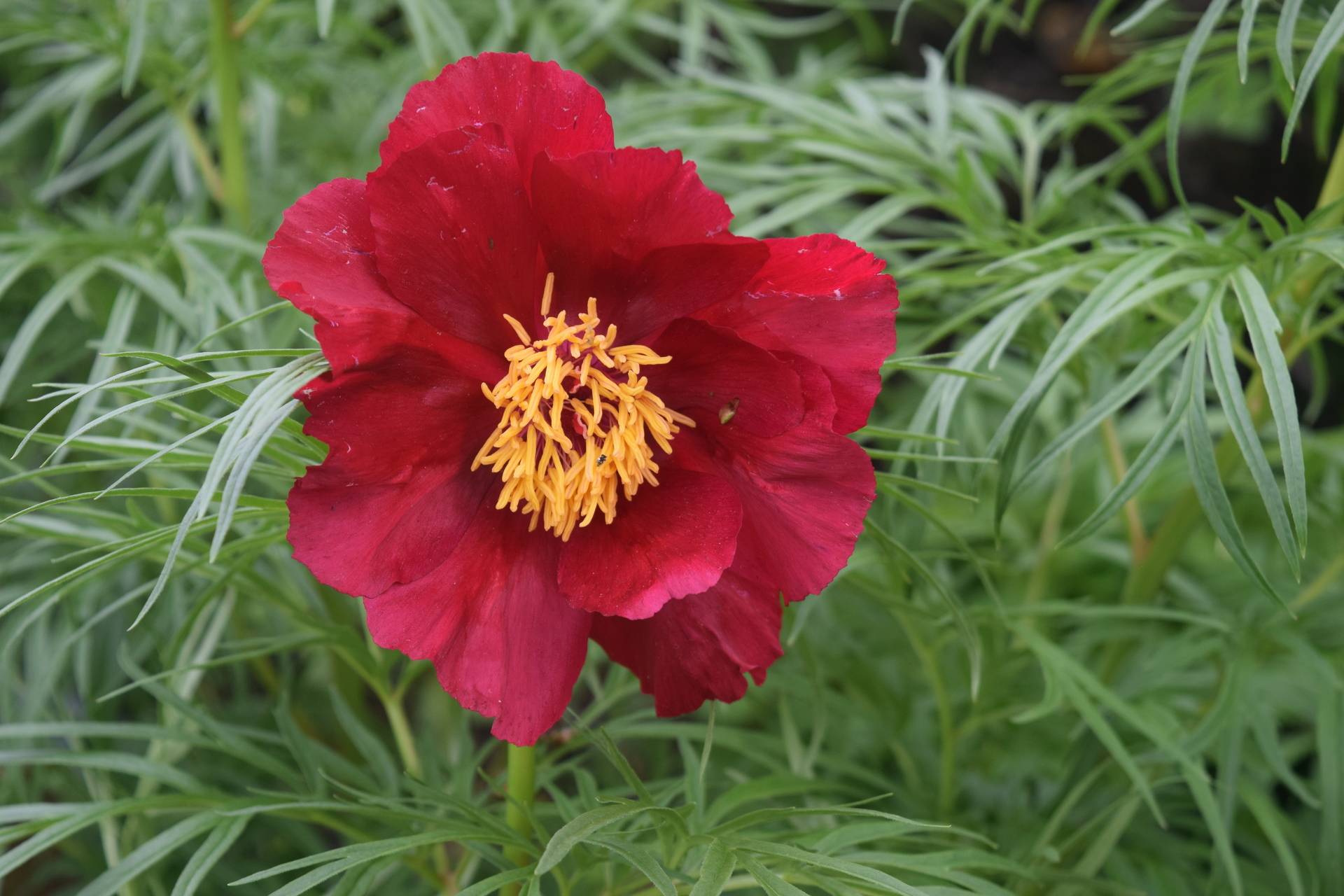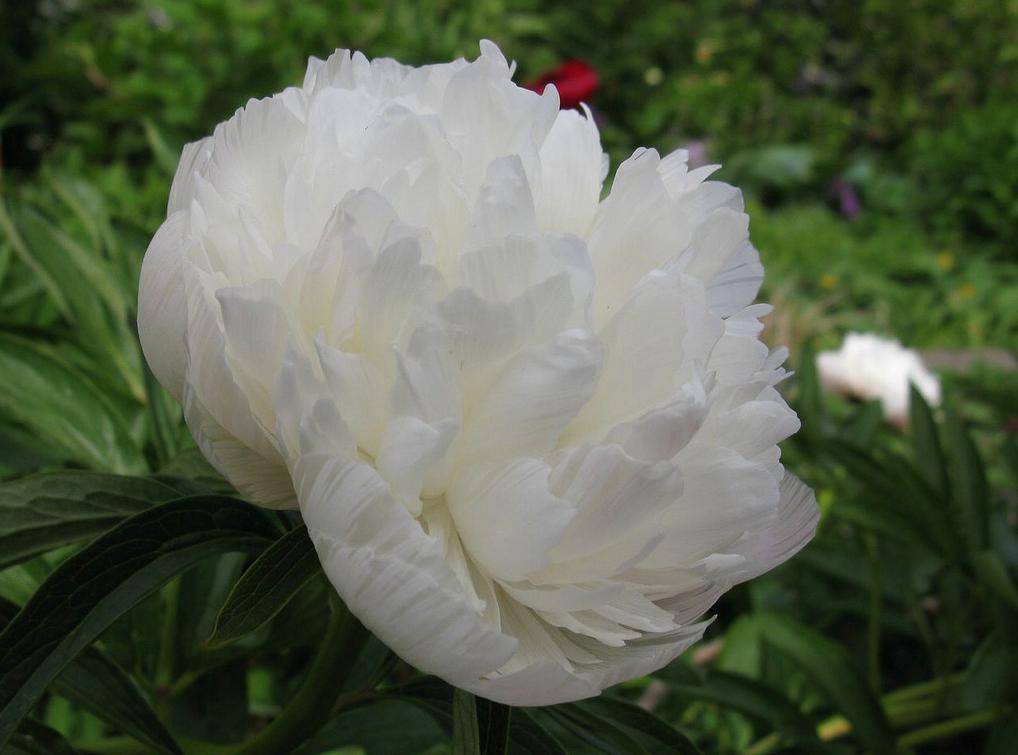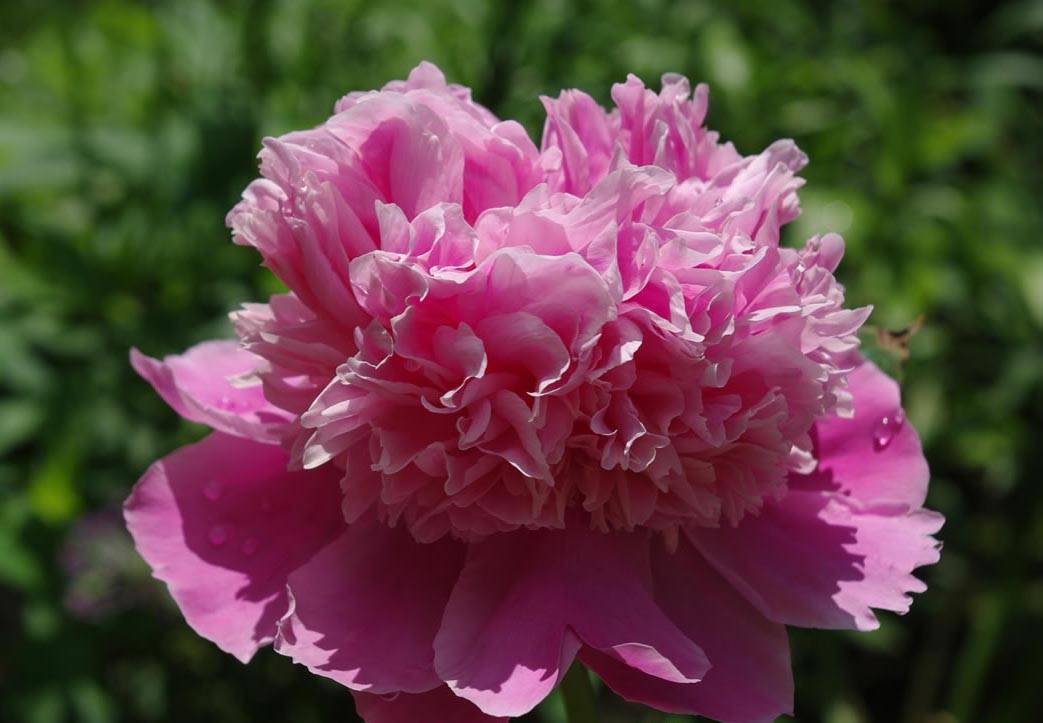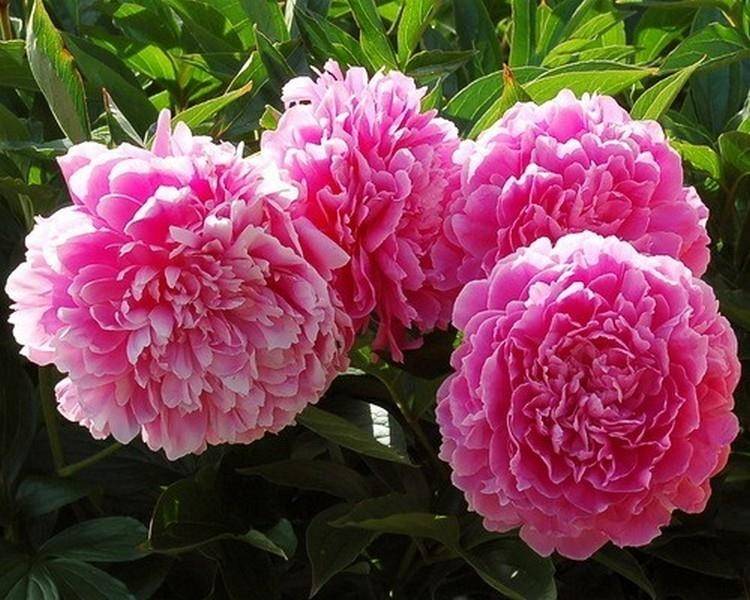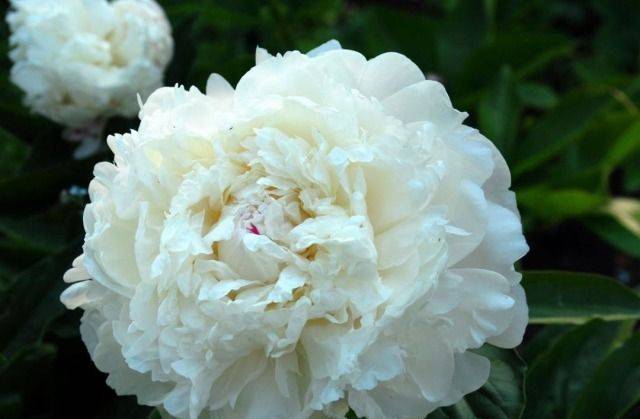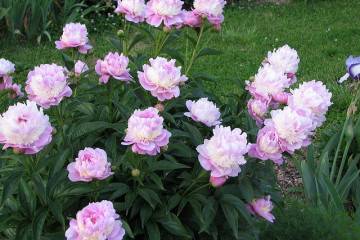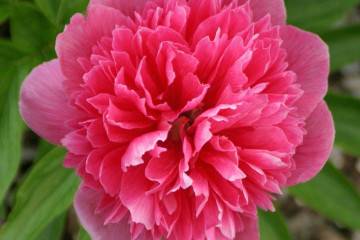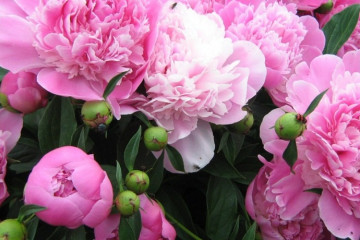When peonies bloom after planting in the garden
Content:
- General information about flowering peonies
- Classification of peonies by flowering period with examples and a short description
- Very early
- Early
- Average
- Late
- Very late
- Classification of peonies by flowering duration with examples and a short description
- When the most common species bloom in our latitudes
- When peonies bloom
- Why do they bloom badly or not?
Unpretentious perennials peonies are popular in most countries with gardeners. They are distinguished by a beautiful appearance with large flowers and a pleasant aroma. Early bud formation allows the peony to become one of the favorite bushes.
General information about flowering peonies
Peony is a perennial plant that can grow in one place for up to 20 years. The underground part is presented in the form of a fleshy tuber, from the buds of which stems grow, reaching a height of up to a meter. Over the years, the tuber becomes thicker, adventitious rhizomes can grow from it. Ornamental plants are divided into tree-like and herbaceous.
First flowering age
Peonies will not bloom in the first year of their life. It takes longer for them to fully develop. First of all, the flower begins to take root and acclimatize. Even shoots in the first year will be insignificant. In the second year, the tuber will begin to thicken at the flower and the number of shoots that it emits will increase.
Small buds may appear at the end of the branches, which should not even be given the opportunity to bloom. It is better to cut them off so that the plant does not waste a lot of energy on them, since the nutrients may not be enough for growth.
Peony lifespan
Tree peonies have a long lifespan - on average, they grow from 100 to 120 years. Herbaceous peony varieties can grow for over 80 years. But hybrids are not so durable, their lifespan does not exceed 10 years.
Flowering features
In China, preference is given to tree-like peony varieties. Among their features are the large size of inflorescences with white, lilac and crimson petals. There is a bright pink spot at the base of the flower. Hybrids are yellow inflorescences, unpretentious and drought-resistant.
Japanese tree peonies are not so large, but they are distinguished by semi-double petals with an interesting color. You can find flowers of dark red, burgundy with a transition to purple at the ends, as well as alternating white and red. Some varieties have a citrus aroma.
In the middle lane, herbaceous varieties of peonies are more common. They have more varieties and hybrids. There are many plants with flowers with semi-double and double petals. The anemone species are distinguished by the presence of stamens in the middle, surrounded by a large number of petals.
Leaving during flowering
When peonies bloom, they need special care. It is recommended to start it at the time of the formation of the kidneys. It is worth more actively watering the plants than usual. Until the buds appear, it is required to process the bushes with copper chloride, which will prevent the appearance of fungal diseases.
If the flowers are cut into buds, leave at least 2 petals on the stem. For the timely establishment of flower buds, it is required to fertilize the plants with potassium and phosphorus in early spring.Loosening peonies after watering in June and July is also required. Moisturizing should be deep.
Classification of peonies by flowering period with examples and a short description
Depending on the variety, the period when peonies grow and how much they bloom changes. By choosing certain varieties, you can decorate your garden in such a way that when some plants have faded, the next ones begin to bloom.
Very early
The earliest varieties of peonies begin their flowering in early May, and it ends early next month. The most colorful of all varieties are Flame, Maryin root, Captivity alba.
Flame
American breeder L. Glasscock in the 40s bred the peony Frame. A flower of a simple form, bright pink, slightly fading to orange. Outside, at the base of the bud, there is a white spot. A large number of yellow long stamens in the core. Has a light aroma. The bush can grow up to 70 cm in height. The diameter of the flowers is 14 cm.
Maryin Root
Herbaceous plant, reaching a height of 1 meter. The diameter of the flowers is 12 cm, the petals are purple-pink with a complex shape. In some countries, the peony variety is listed in the Red Book, but it can be found in the wild in Altai, in the Perm Territory, Siberia and Komi.
Capture of Alba
Hemispherical peony with terry snow-white inflorescences. Has a slight odor. The flowers reach 14 cm in diameter, the bush can grow up to 80 cm in height. The duration of flowering, depending on the region, varies from 7 to 20 days.
Early
Early varieties of the plant begin to bloom in early June. These include Edulis Superba, Le Sinh, White Sail, Monsieur Jules Elie.
Edulis Superba
Sprawling bush with dark green leaves. The flower reaches a diameter of 17 cm, a pink crown of narrow petals is located on a lilac-pink skirt. During flowering, it may brighten a little under the sun's rays. It has a strong aroma. The height of the bush is up to 90 cm.
Le Xin
Milk-flowered peony with double petals. The height of the bush can reach 70 cm. The diameter of the flower is about 18 cm. The buds are white with a slight tint of ivory.
Monsieur Jules Elie
A terry spherical herbaceous peony, the flowers of which can reach 18 cm in diameter. The flower can grow up to 90 cm in height. The bud is light pink with a lilac tint. The lower petals are larger and bent slightly downward.
Average
Average flowering time in hybrids (Princess Margaret, Mont Blanc). The buds open in mid-June and bloom at the end of the month.
Princess margaret
Lactic-flowered double peony of dark pink color with large petals. The diameter of the buds can reach 20 cm. The plant grows up to 80 cm in height, has powerful ribbed stems and large leaves.
Mont Blanc
The peduncle reaches a height of 85 cm. The diameter of the flower is small - about 16 cm. Mont Blanc is a herbaceous white terry peony. Flowering lasts about 10 days. No more than 6 buds are formed on the stem.
Late
Snow globe, Anshantress, Pobeda belong to late plant varieties. They bloom from late June to early July.
Snowball
Plant height - up to 90 cm. Terry creamy white flowers, up to 16 cm in diameter. Possesses a strong aroma. Frost resistant, can withstand temperatures down to -40 degrees Celsius.
Anshantress
Milk-flowered peony, which can reach a height of 1 meter. It differs in double petals and color: when blooming, the petals are white with a slight lemon tint with a pink stripe in the middle, the outer ones have a slight greenish tint.
Very late
In very late varieties, the beginning of flowering occurs in the 30s of June and continues until 8 July. These include Philip Rivoir, Munglow, Edlund.
Philippe Rivoir
Milk-flowered peony, the diameter of the flowers of which can reach 14 cm. It is distinguished by a perfect cup-shaped form with a symmetrically curved center and dense petals of a dark crimson flower. Has a strong aroma. The bush reaches 90 cm in height.
Munglow
A compact bush with dark green large foliage up to 80 cm high. The flowers are white-cream when blooming, subsequently becoming pure white with small red marks on the inner petals. The diameter of the bud is 18 cm.
Classification of peonies by flowering duration with examples and a short description
Flowers differ in many ways: color, configuration, size. All varieties can be divided into 5 groups according to the type of bud:
- Non-double. There are 5-10 petals in the bud, which are distributed in 2 rows. In the center, a large number of pistils and stamens. Differs in strong erect stems. Examples: Golden Glow, Nadia.
- Japanese are a transitional form from non-double to terry. In this form, the stamens have somewhat transformed into bent petals, due to which a pillow of various colors (pink, scarlet, yellow) is formed in the core. The pillow may differ in color from the rest of the petals or be of the same tone. Stems are erect, resilient. Examples: Akron, Gold Standard.
- Anemonic. The petals are arranged in many rows. In the middle there is a small bunch of yellow stamens. Examples: Longfellow, Snow Montan.
- Semi-double. The flower has a large number of petals arranged in many rows. At the core is a mixture of regular and transformed stamens. The buds retain their freshness for a long time after cutting. Examples: Legion Hankor, Lastres.
- Terry. The core is framed by a large number of wide petals. In some species, the stamens are deformed. Examples: Red Charm, BOB.
Flowering times differ depending on the variety.
When the most common species bloom in our latitudes
Peony varieties are chosen depending on the type of soil and weather conditions. You cannot plant a plant in a pot, since the substrate in it will deplete faster, and therefore you should carefully look for options for your garden. Given the unpretentiousness of the plant, this is not difficult.
However, when do the most common varieties begin to bloom? Information about this is detailed in the table:
| Name | The beginning of flowering |
| Maryin root | May 15-20 |
| Delaway | May 23-24 |
| Lactobacillus | June 10-15 |
| Back oval | June 1-5 |
| Drug | June 10-15 |
| Roca | May 25-29 |
When peonies bloom
When the day of peonies is over, the plants begin to wilt. Despite the short lifespan of the flower, it is very popular with gardeners even from Siberia and the Urals, since it is not very capricious and its hybrids can take root in almost any area.
Proper care and pruning
The season of peonies sooner or later, but ends. Do not leave them at the same time and stop caring. They need care after the buds have faded no less than at the time of bud formation.
When the peony season ends, you need to continue to water them abundantly. At the same time, watering should not be superficial, and therefore, before hiding for the winter, they should be moistened and loosened. Cutting buds that have already bloomed is recommended.
In order for the winter to pass peacefully, ornamental bushes need to be cut and covered with humus or peat. If a transplant or reproduction is planned, then this is required in August.
Why do they bloom badly or not?
In the third year after planting, peonies bloom, but some plants may begin to form buds only in the fourth year of life (often they are red). If the flowers develop well, but bud formation does not occur, then the reason may lie in the following reasons:
- improper planting of the bush;
- depleted soil due to closely growing crops and trees;
- poorly chosen seedling;
- shaded area where peonies were planted.
Peonies should be planted in sunny places of the site, away from trees and ground buildings. Even a couple of hours in the shade a day the plant does not tolerate well. It is worth choosing an open place, there should not be a close occurrence of groundwater.
If the buds appear, but there are few of them or they look unattractive, then the problem is in improper care of them. Stopping a flower in development occurs most often due to depletion of the soil. It is recommended to feed the plantings with mineral fertilizers. Also, fungal diseases do not allow the plant to fully develop.
Proper care of peonies will allow you to see their beautiful buds in time. If this does not happen, it is worth finding out what is causing this: the wrong climate or the way the plant is planted. When the peonies fade, it is also recommended to forget to care for them according to all the rules in order to enjoy flowering again next season.
